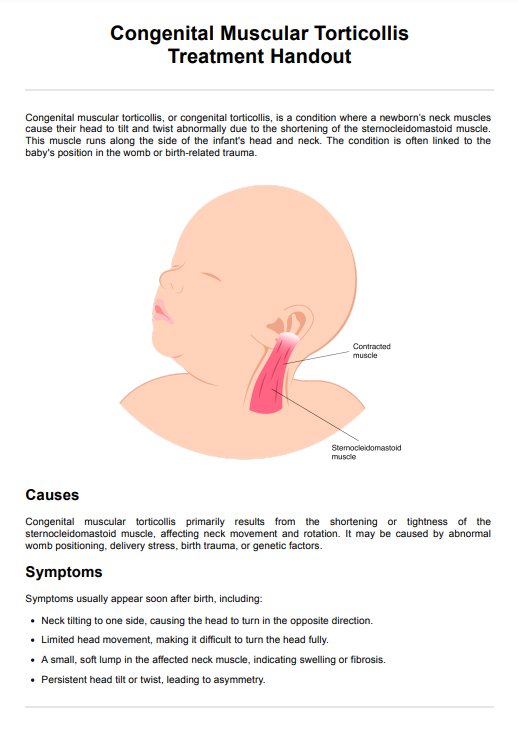If left untreated, congenital muscular torticollis can contribute to abnormal development, such as asymmetry of the child’s shoulders and head. The restricted motion called congenital muscular torticollis issue can also affect the cervical spine, potentially impacting the spinal cord over time.

Congenital Muscular Torticollis Treatment Handout
Learn about congenital muscular torticollis, its causes, symptoms, and treatment options. Download our free Congenital Muscular Torticollis Treatment Handout here.
Congenital Muscular Torticollis Treatment Handout Template
Commonly asked questions
Treatment often involves physical therapy that focuses on stretching the tight muscle and improving contralateral rotation. In more severe cases, exercises targeting the opposite side of the neck and baby’s shoulders are included to enhance the infant's range of motion and prevent further complications.
While congenital muscular torticollis is not classified as a rare birth defect, it is a condition that requires prompt attention. Early intervention is key to preventing more severe outcomes related to muscle injury, abnormal head motion, and spinal cord alignment.
EHR and practice management software
Get started for free
*No credit card required
Free
$0/usd
Unlimited clients
Telehealth
1GB of storage
Client portal text
Automated billing and online payments











